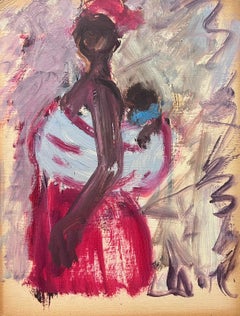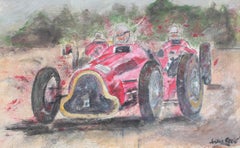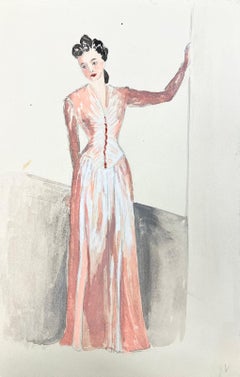England - Portrait Paintings
20th Century Modern England - Portrait Paintings
Oil
1960s Modern England - Portrait Paintings
Oil, Board
Mid-20th Century Post-Impressionist England - Portrait Paintings
Ink, Watercolor, Color Pencil
1980s Modern England - Portrait Paintings
Canvas, Oil, Board
1890s Victorian England - Portrait Paintings
Oil
21st Century and Contemporary Modern England - Portrait Paintings
Oil
1660s Old Masters England - Portrait Paintings
Oil
1980s England - Portrait Paintings
Oil, Board
1950s Realist England - Portrait Paintings
Oil
Late 18th Century England - Portrait Paintings
Oil
Late 17th Century Old Masters England - Portrait Paintings
Oil, Canvas
Mid-20th Century Impressionist England - Portrait Paintings
Watercolor, Gouache, Pencil
Mid-20th Century Impressionist England - Portrait Paintings
Gouache
Early 20th Century England - Portrait Paintings
Oil
Early 18th Century Old Masters England - Portrait Paintings
Canvas, Oil
19th Century Victorian England - Portrait Paintings
Oil
Mid-20th Century Impressionist England - Portrait Paintings
Gouache
1730s Old Masters England - Portrait Paintings
Oil
17th Century Old Masters England - Portrait Paintings
Oil, Wood Panel
Early 18th Century Old Masters England - Portrait Paintings
Canvas, Oil
Late 20th Century Contemporary England - Portrait Paintings
Oil
1950s Post-Impressionist England - Portrait Paintings
Oil
2010s Contemporary England - Portrait Paintings
Gesso, Paint, Mixed Media, Acrylic, Board
17th Century Old Masters England - Portrait Paintings
Canvas, Oil
Early 19th Century English School England - Portrait Paintings
Oil, Canvas
19th Century Realist England - Portrait Paintings
Oil
17th Century Old Masters England - Portrait Paintings
Canvas, Oil
2010s Impressionist England - Portrait Paintings
Oil
17th Century England - Portrait Paintings
Canvas, Oil
Early 20th Century American Impressionist England - Portrait Paintings
Crayon, Pencil
1950s Modern England - Portrait Paintings
Canvas, Oil
Mid-20th Century Impressionist England - Portrait Paintings
Paper, Ink, Watercolor, Gouache
Mid-19th Century Victorian England - Portrait Paintings
Oil, Canvas
1740s Old Masters England - Portrait Paintings
Oil
Late 18th Century French School England - Portrait Paintings
Canvas, Oil
18th Century Old Masters England - Portrait Paintings
Oil
1960s England - Portrait Paintings
Canvas, Oil
1990s Realist England - Portrait Paintings
Oil
17th Century Old Masters England - Portrait Paintings
Oil, Wood Panel
18th Century England - Portrait Paintings
Canvas, Oil
1890s Impressionist England - Portrait Paintings
Oil
Mid-20th Century Impressionist England - Portrait Paintings
Oil
1940s England - Portrait Paintings
Oil, Board
Mid-20th Century England - Portrait Paintings
Oil
Early 19th Century Rococo England - Portrait Paintings
Canvas, Oil
1970s English School England - Portrait Paintings
Oil, Canvas
21st Century and Contemporary Impressionist England - Portrait Paintings
Canvas, Acrylic
20th Century English School England - Portrait Paintings
Oil
1960s Modern England - Portrait Paintings
Oil
1990s Realist England - Portrait Paintings
Oil
1930s English School England - Portrait Paintings
Oil, Canvas
1970s Impressionist England - Portrait Paintings
Oil
Mid-20th Century English School England - Portrait Paintings
Oil
18th Century Old Masters England - Portrait Paintings
Canvas, Oil
17th Century England - Portrait Paintings
Canvas, Oil
17th Century England - Portrait Paintings
Oil
Mid-20th Century Post-Impressionist England - Portrait Paintings
Canvas, Oil
21st Century and Contemporary Minimalist England - Portrait Paintings
Wood, Acrylic
19th Century England - Portrait Paintings
Canvas, Oil
Early 20th Century Impressionist England - Portrait Paintings
Oil
Read More
Cecilia Vicuña Merges Politics, Science and Spirituality in Her Poetic Art
The Chilean creator, who has been living in exile in New York for decades, is having a major moment, receiving the biggest exhibitions, commissions and awards an artist could dream of.
In Christopher Spitzmiller’s New York Homes, His Love of Dogs Is on Full Display
The ceramist, designer and gentleman farmer tells us about the collection of antique dog art he has spread across a New York City apartment and a Greek Revival farmhouse in the Hudson Valley.
This Wiener Werkstätte Master Made Everything into Art
Koloman Moser smashed the conservative conventions of art and design in fin-de-siècle Vienna. On the 100th anniversary of his death, the Austrian designer is being celebrated for his radically modern creations.




